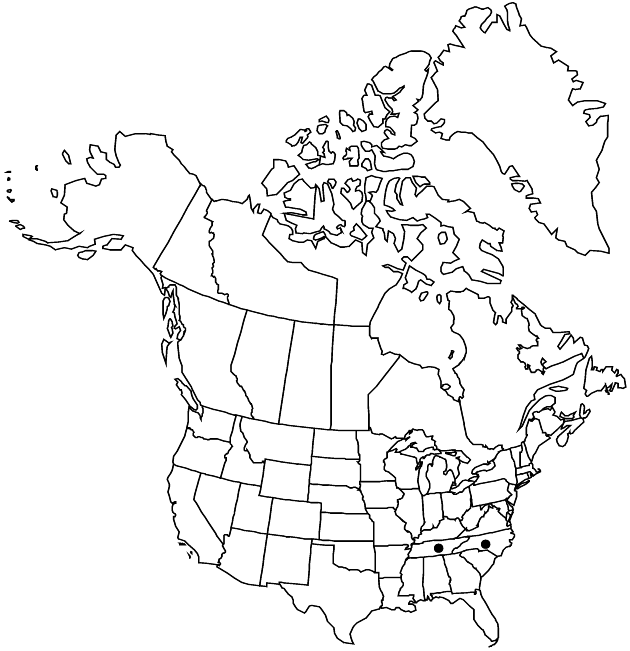Solidago spithamaea
Amer. J. Sci. Arts 42: 42. 1842.
Plants 10–40 cm (with somewhat noxious odor); rhizomes short, stout, or branched caudices. Stems 1–10+, erect (usually simple), rough-puberulent or shortly spreading hirsute, or proximally glabrate. Leaves: basal petioles 1.5–7 mm, blades spatulate to lanceolate or subrhombic, mostly 50–109 × 15–40 mm, bases tapering, glabrous, margins sharply serrate, ciliate, apices acuminate; mid and distal sessile, blades lanceolate to subrhombic, much reduced distally, margins serrulate becoming entire distally, glabrous. Heads 15–50+ in compactly rounded corymbiform arrays, becoming paniculiform in robust plants. Peduncles 1–7, short-strigose; bracts leaflike, 5–15 mm. Involucres campanulate, 5–6 mm. Phyllaries (in 3–4 series) lanceolate, unequal (midnerves swollen), acute to acuminate (tips dark green). Ray florets 8–10(–15); laminae 2–3.5 mm. Disc florets 20–60; corollas 3.5–4.5 mm, lobes 1.5–2 mm. Cypselae 2–3 mm, sparsely strigose to glabrate; pappi (of 12–22 bristles) about 3 mm. 2n = 54.
Phenology: Flowering Sep–Oct.
Habitat: Rock crevices of exposed outcrops
Elevation: 1600–2000 m
Distribution

N.C., Tenn.
Discussion
Of conservation concern.
Solidago spithamaea is listed as threatened by the U.S. Fish and Wildlife Service. The species is extant at only three locations; all other known populations were extirpated. It is in the Center for Plant Conservation’s National Collection of Endangered Plants.
Selected References
None.